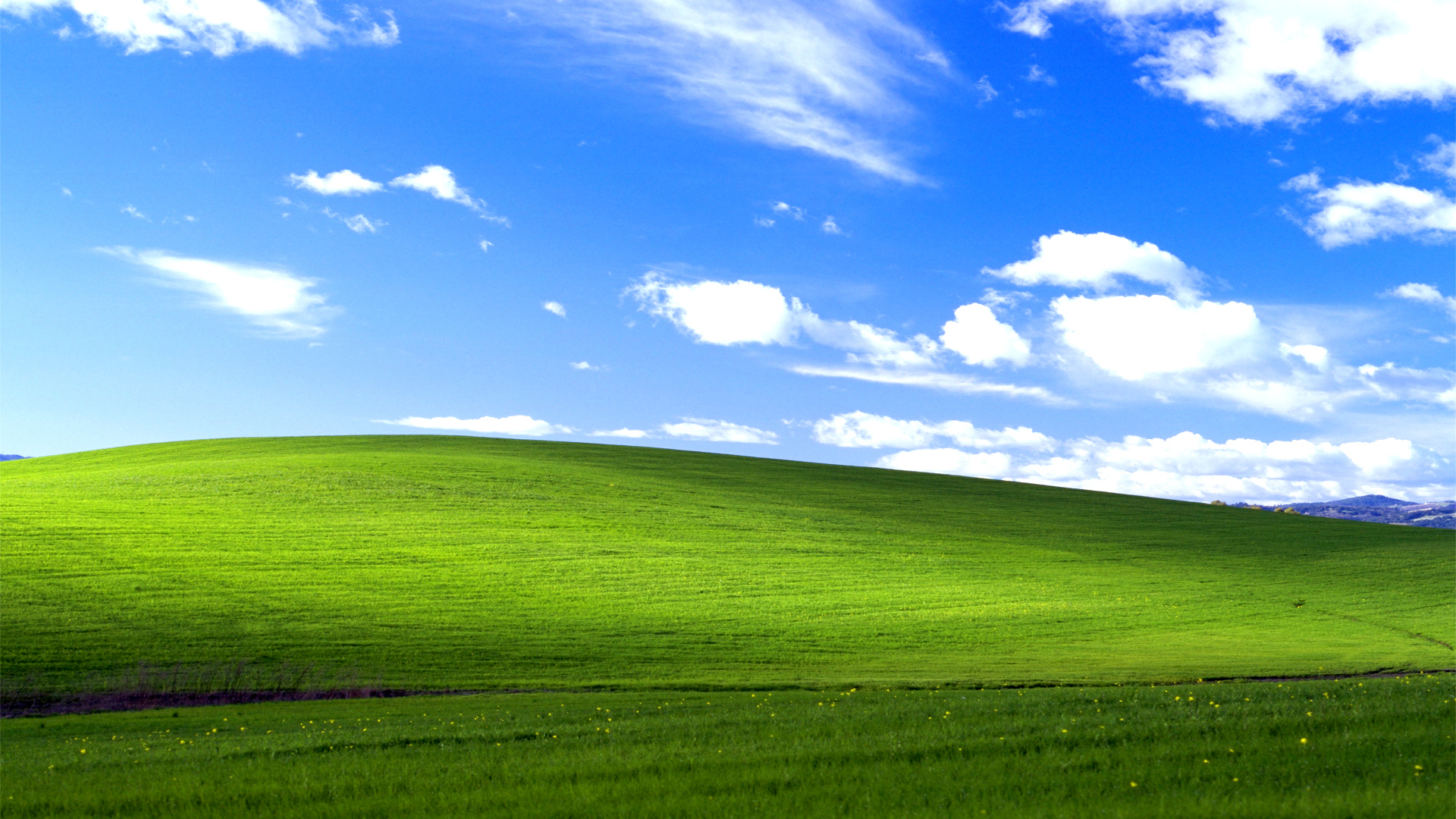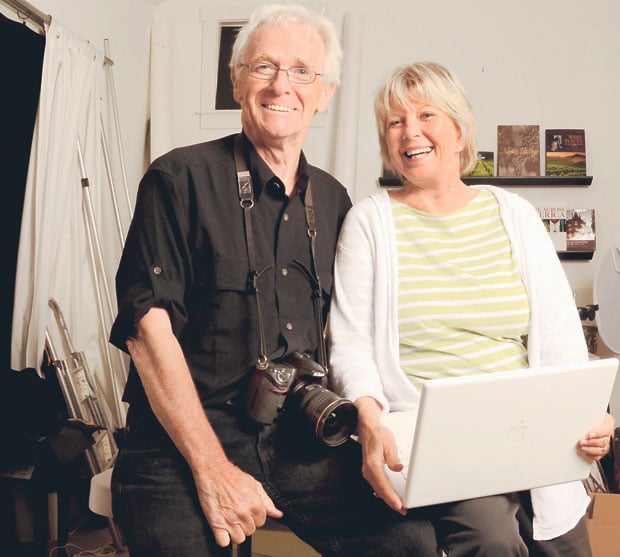Simply entitled "Bliss" this photo served as the Windows XP background. If you are around the age of 16 or older you will most likely remember it. I know I do.
This ramble isn't just about the most viewed photo in the world, it's about a man, fortunate events, and becoming the default.
I had always assumed the background photo wasn't a real photo. I'm not sure what I thought it was, I guess maybe I thought it was a Photoshop composite or a work of CGI.
It turns out, it isn't, it's a very real photograph taken by Charles O'Rear.
In the early 1960s O'Rear started his photographic journey at smaller regional newspapers. In 1966 he got his first larger role becoming a photographer for the LA Times.
In 1971 he began doing work with National Geographic, his career would take him around the globe to 30 countries and every US state. In 1972 O'Rear was sent by the magazine to the Napa Valley region of California. About a week into his assignment he received a call from his boss telling him the gig was up. The Grosvenor family, who at the time managed the magazine, firmly disagreed with publishing articles that would promote alcohol in any way. Napa Valley, which wasn't as well known at the time has since become a powerhouse in the wine industry. O'Rear was sent on other assignments until the magazine reversed course in 1978 to do a story on Napa Valley. O'Rear liked the region so much after working there he decided to make it home, buying a condo, and eventually in 1989 a house.
 |
| O'Rear's Book |
In 1995 Charles O'Rear finished his last assignment for National Geographic and would go on to specialize in photographing the wine industry, specifically in Napa Valley. He has since produced several well selling books on the subject. In January 1996, O'Rear was making his usual drive along California Route 12 on his way to visit his girlfriend Daphne Larkin, when he pulled over to take pictures of the now famous hill. The sun and clouds were just right, and a hill, which had in the past been a vineyard, was green and grassy. O'Rear snapped the shot on his Mamiya RZ67 camera, using Fujifilm Velvia medium format film. The combination of the high quality medium format camera and the notoriously high contrast Velvia film created the bright, almost too perfect look of the photo.
O'Rear went on his way, not thinking much of the 3 photos he had just taken. He often stopped by the side of the road to take pictures and these photos didn't seem much different.
He later uploaded the photos to Westlight, a photo licensing service which he had helped co-found, under the name "Bucolic Green Hills."
Westlight was bought out by Corbis, a larger photo licensing company, which happened to be owned by a certain Bill Gates. (There is some thought that when the photo was automatically uploaded to Corbis the contrast was bumped up because of Corbis' color settings, giving it even brighter look.)
Around 2001 O'Rear was contacted by Microsoft, who informed him they were interested in purchasing the photo "Bucolic Green Hills", which they would later rename "Bliss." Initially O'Rear didn't know what the photo would be used for. Although I assume he knew it would be for something big, as he had to sign a non-disclosure agreement about the price of the image. This was done so as not to make other photographers jealous (just kidding), but it is believed that O'Rear was paid in the low 6 figures.
The price paid of the photo was so high shipping companies refused to carry it, so Microsoft flew O'Rear out to Washington to hand deliver the negatives.
Windows XP happened to become extremely successful, with Bliss as default wallpaper. This in turn made bliss the most viewed image in the world (by estimate).
Just like that, a photo which had been taken on a routine car ride was famous and ubiquitous. It was everywhere, in schools, homes, and businesses.
However, just because something is everywhere doesn't mean it will be widely appreciated. If anything it may be looked down upon. If you are of a certain age it's entirely possible that you could have had bliss as your wallpaper staring back at you for 7-10 years and never really given it much thought. As I said earlier, many thought it wasn't even a real photo.
Charles O'Rear has taken many beautiful photos in his career, photographed and documented the California wine industry, and worked with National Geographic. In an interview with people magazine O'Rear's wife lightheartedly joked, "Twenty-five years at Geographic and nobody ever gives a damn about that." By stopping on that brisk January day and snapping a photo of a hill he had seen many times, O'Rear unintentionally altered the course of his career.
Some might view the extreme commercial success of a stock image as degrading to a photographer and their career. This may be true, and O'Rear has acknowledged (again according to the People interview) that the image has been cemented in his legacy for better or for worse. Despite this O'Rear seems content with his career.
With anything in life there are trade-offs, the commercial success and widespread use of Bliss may have changed how people view O'Rear, but at the same time would we be talking about his career in depth if he wasn't the "Windows XP guy"?
Probably not; why shouldn't O'Rear be content, he got around 6 figures for a single photo?
As for O'Rear, he married his girlfriend Daphne Larkin in 2001. Together they continued to document the wine industry. In an ironic twist, both have admitted to being Mac users, although Larkin says she has manually set her background to Bliss saying, "I never get tired of looking at it."
The happily married couple have since moved to North Carolina to be closer to family and have enjoyed being active in their new community. It seems they are mostly retired from photography and journalism. One could say they are living a "blissful" life, and that's all that really matters isn't it.

:max_bytes(150000):strip_icc():focal(749x0:751x2):format(webp)/chuck-orear-5114ee47995f417dbac285b4e55e8142.jpg)

Comments
Post a Comment